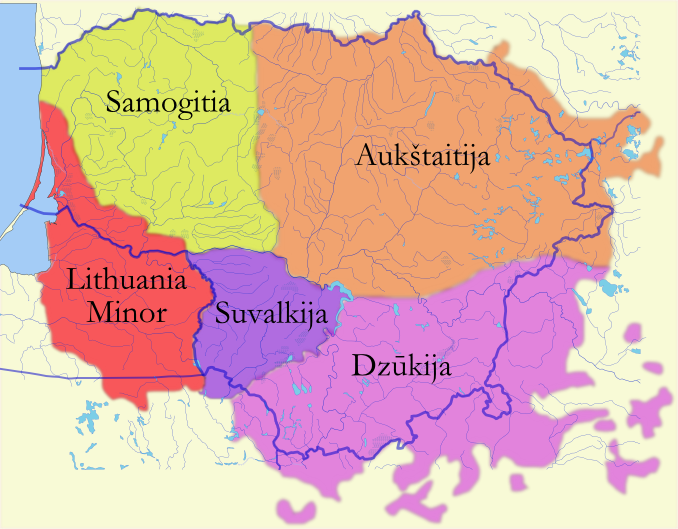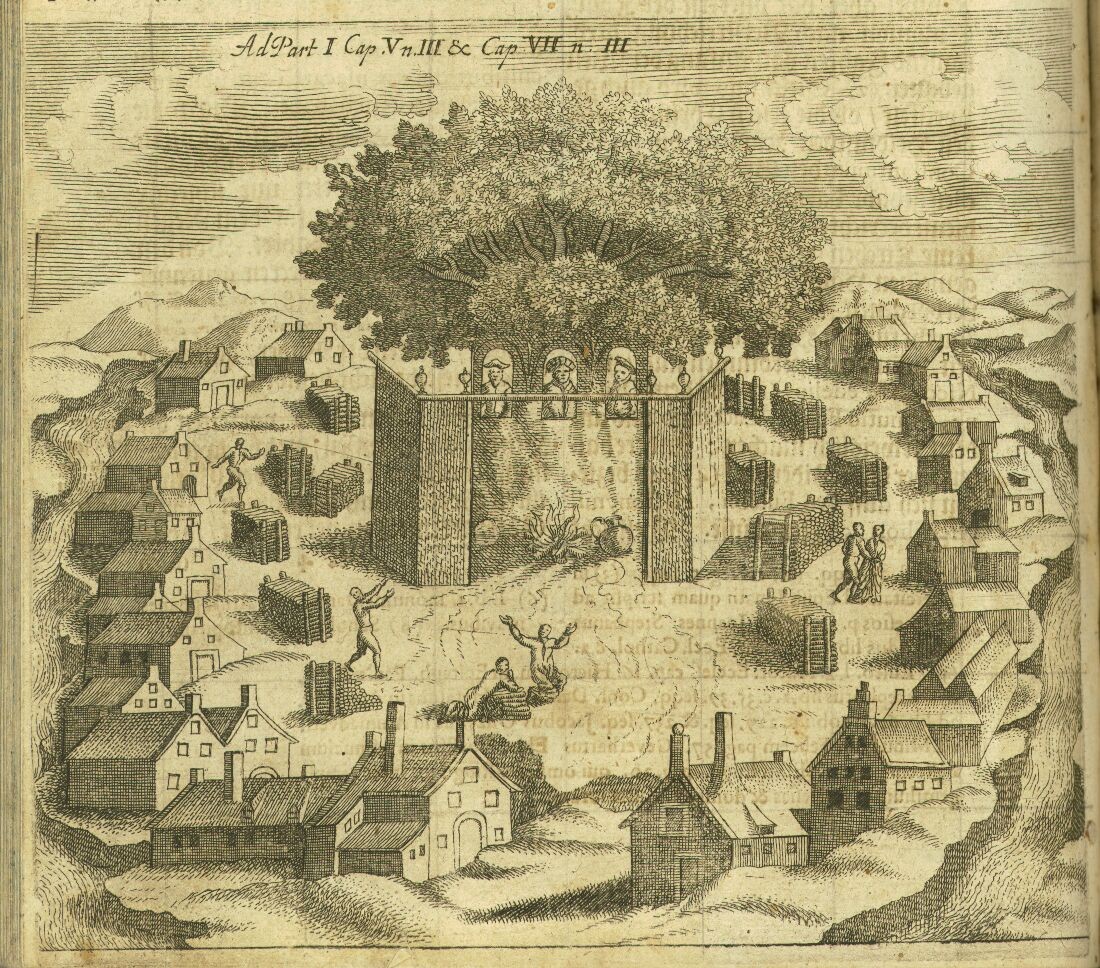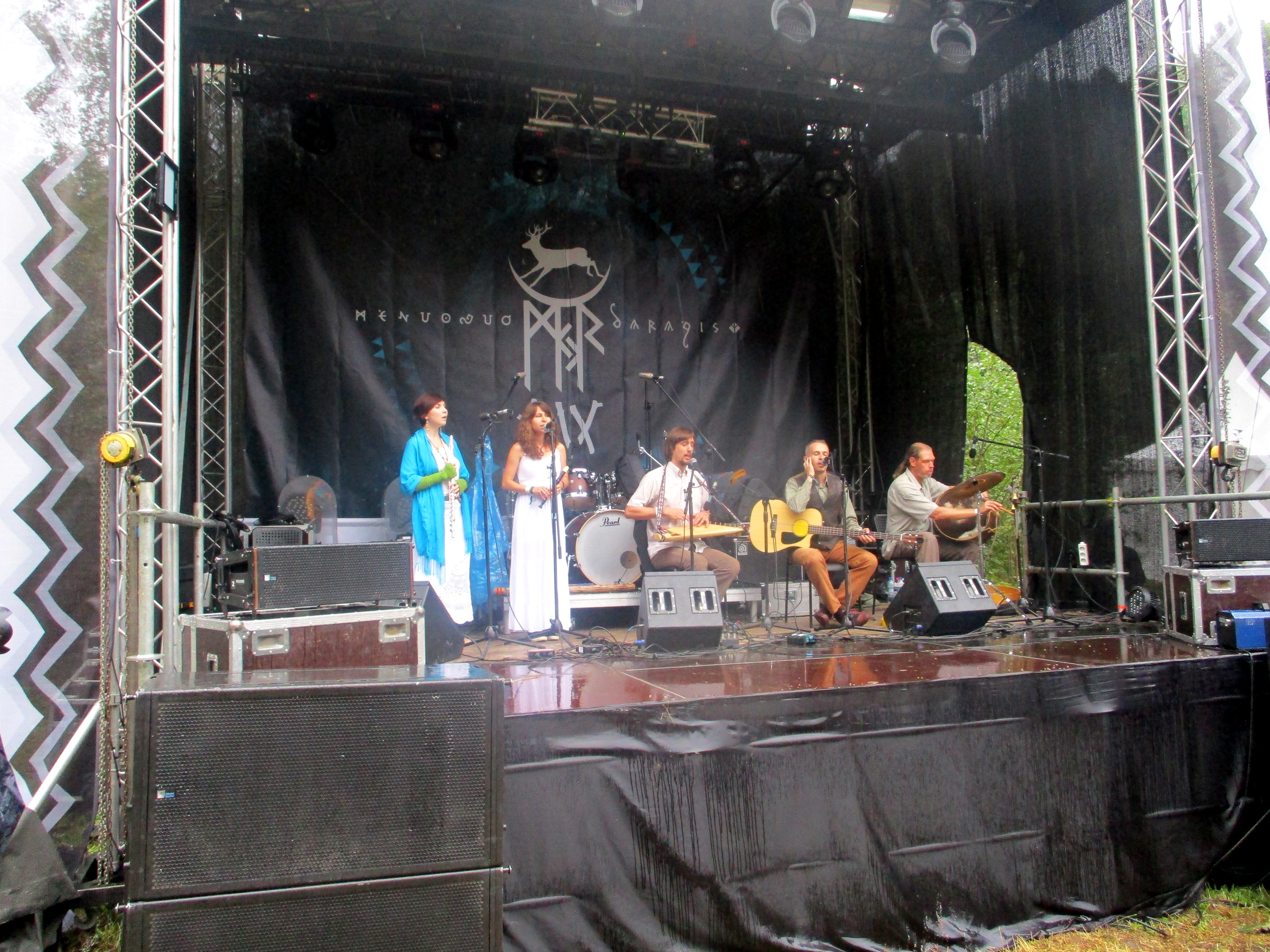|
Nadruvia
The Nadruvians were a now-extinct Prussian tribe. They lived in Nadruvia (alternative spellings include: ''Nadruva'', ''Nadrowite'', ''Nadrovia'', ''Nadrauen'', ''Nadravia'', ''Nadrow'' and ''Nadra''), a large territory in northernmost Prussia. They bordered the Skalvians on the Neman (Nemunas) River just to the north, the Sudovians to the east, and other Prussian tribes to the south and west. Most information about the clan is provided in a chronicle by Peter von Dusburg. History In 1236 Peter of Dusburg wrote that Nadruvia was the location of Romuva, the sacred center of Baltic religion. From Romuva Kriwe, the chief priest or "pagan Pope", ruled over the religion of all the Balts. No other sources mention the place. Scientists have considerable doubts if such an organized structure existed. As the northernmost clan, Nadruvians were conquered last by the Teutonic Knights, a German crusading military order. In 1230 the Knights set up their base in the Chełmno Land in Poland an ... [...More Info...] [...Related Items...] OR: [Wikipedia] [Google] [Baidu] |
Lithuania Minor
Lithuania Minor ( lt, Mažoji Lietuva; german: Kleinlitauen; pl, Litwa Mniejsza; russian: Ма́лая Литва́), or Prussian Lithuania ( lt, Prūsų Lietuva; german: Preußisch-Litauen, pl, Litwa Pruska), is a historical ethnographic region of Prussia, where Prussian Lithuanians (or Lietuvininkai) lived, now located in Lithuania and the Kaliningrad Oblast of Russia. Lithuania Minor encompassed the northeastern part of the region and got its name from the territory's substantial Lithuanian-speaking population. Prior to the invasion of the Teutonic Knights in the 13th century, the main part of the territory later known as Lithuania Minor was inhabited by the tribes of Skalvians and Nadruvians. The land depopulated during the incessant war between Lithuania and the Teutonic Order. The war ended with the Treaty of Melno and the land was repopulated by Lithuanian newcomers, returning refugees, and the remaining indigenous Baltic peoples; the term Lithuania Minor appeared for ... [...More Info...] [...Related Items...] OR: [Wikipedia] [Google] [Baidu] |
Old Prussians
Old Prussians, Baltic Prussians or simply Prussians (Old Prussian: ''prūsai''; german: Pruzzen or ''Prußen''; la, Pruteni; lv, prūši; lt, prūsai; pl, Prusowie; csb, Prësowié) were an indigenous tribe among the Baltic peoples that inhabited the region of Prussia, at the south-eastern shore of the Baltic Sea between the Vistula Lagoon to the west and the Curonian Lagoon to the east. The Old Prussians, who spoke an Indo-European language now known as Old Prussian and worshipped pre-Christian deities, lent their name, despite very few commonalities, to the later, predominantly Low German-speaking inhabitants of the region. The duchy of the Polans under Mieszko I, which was the predecessor of the Kingdom of Poland, first attempted to conquer and baptize the Baltic tribes during the 10th century, but repeatedly encountered strong resistance. Not until the 13th century were the Old Prussians subjugated and their lands conquered by the Teutonic Order. The remaining Old Prus ... [...More Info...] [...Related Items...] OR: [Wikipedia] [Google] [Baidu] |
Great Prussian Uprising
The Prussian uprisings were two major and three smaller uprisings by the Old Prussians, one of the Balts, Baltic tribes, against the Teutonic Knights that took place in the 13th century during the Prussian Crusade. The crusading Military order (society), military order, supported by the Popes and Christian Europe, sought to conquer and convert the paganism, pagan Prussians. In the first ten years of the crusade, five of the seven major Prussian clans fell under the control of the less numerous Teutonic Knights. However, the Prussians rose against their conquerors on five occasions. The first uprising was supported by Duke Swietopelk II, Duke of Pomerania. The Prussians were successful at first, reducing the Knights to only five of their strongest castles. The duke then suffered a series of military defeats and was eventually forced to make peace with the Teutonic Knights. With Duke Swietopelk's support for the Prussians broken, a prelate of Pope Innocent IV negotiated a peace tre ... [...More Info...] [...Related Items...] OR: [Wikipedia] [Google] [Baidu] |
Prussia (region)
Prussia (Old Prussian: ''Prūsa''; german: Preußen; lt, Prūsija; pl, Prusy; russian: Пруссия, tr=Prussiya, ''/Prussia/Borussia'') is a historical region in Europe on the south-eastern coast of the Baltic Sea, that ranges from the Vistula delta in the west to the end of the Curonian Spit in the east and extends inland as far as Masuria. Tacitus's ''Germania'' (98 AD) is the oldest known record of an eyewitness account on the territory and its inhabitants. Pliny the Elder had already confirmed that the Romans had navigated into the waters beyond the ''Cimbric peninsula'' (Jutland). Suiones, Sitones, Goths and other Germanic people had temporarily settled to the east and west of the Vistula River during the Migration Period, adjacent to the Aesti, who lived further to the east. Overview The region's inhabitants of the Middle Ages have first been called ''Bruzi'' in the brief text of the Bavarian Geographer and since been referred to as Old Prussians, who, beginning in ... [...More Info...] [...Related Items...] OR: [Wikipedia] [Google] [Baidu] |
Kaliningrad Oblast
Kaliningrad Oblast (russian: Калинингра́дская о́бласть, translit=Kaliningradskaya oblast') is the westernmost federal subject of Russia. It is a semi-exclave situated on the Baltic Sea. The largest city and administrative centre of the province (oblast) is the city of Kaliningrad, formerly known as Königsberg. The port city of Baltiysk is Russia's only port on the Baltic Sea that remains ice-free in winter. Kaliningrad Oblast had a population of roughly 1 million in the Russian Census of 2010. The oblast is bordered by Poland to the south, Lithuania to the north and east and the Baltic Sea to the north-west. The territory was formerly the northern part of the Prussian province of East Prussia; the remaining southern part of the province is today part of the Warmian-Masurian Voivodeship in Poland. With the defeat of Nazi Germany in World War II, the territory was annexed to the Russian SFSR by the Soviet Union. Following the post-war migrat ... [...More Info...] [...Related Items...] OR: [Wikipedia] [Google] [Baidu] |
Sambians
The Sambians were a Old Prussians, Prussian tribe. They inhabited the Sambia Peninsula north of the city of Königsberg (now Kaliningrad). Sambians were located in a coastal territory rich in amber and engaged in trade early on (see Amber Road). Therefore, they established contacts with foreign nations before any other Prussians. However, as all other Prussians, they were conquered by the Teutonic Knights, and, exposed to cultural assimilation, assimilation and Germanisation of Prussia, Germanization, became extinct sometime in the 17th century. The Sambians bordered the Natangians in the south, and the Nadruvians in the east. History Engaged in the amber trade, Sambia was the richest and most densely populated region of Prussia (region), Prussia. It provides a wealth of artifacts from the Bronze Age, including imported goods from the Roman Empire. Sambians, unlike other Prussians, did not cremate their dead. They built earth barrows above graves and surrounded them with stone ci ... [...More Info...] [...Related Items...] OR: [Wikipedia] [Google] [Baidu] |
Romuva (temple)
Romuva or Romowe (also known as Rickoyoto in the writings of Simon Grunau) was an alleged pagan worship place (a temple or a sacred area) in the western part of Sambia, one of the regions of pagan Prussia. In contemporary sources the temple is mentioned only once, by Peter von Dusburg in 1326. According to his account, Kriwe-Kriwajto, the chief priest or "pagan pope", lived at Romuva and ruled over the religion of all the Balts. According to Simon Grunau, the temple was central to Prussian mythology. Even though there are considerable doubts whether such a place actually existed, the Lithuanian neo-pagan movement '' Romuva'' borrowed its name from the temple. Historical accounts According to Peter von Dusburg, writing in 1326, the name ''Romuva'' is derived from the word Rome. He describes the Kriwe as a powerful priest who was held in high regard by the Prussians, Lithuanians, and Balts of Livonia. His messengers were recognized by a certain rod or other insignia. He guarded th ... [...More Info...] [...Related Items...] OR: [Wikipedia] [Google] [Baidu] |
Lithuanians
Lithuanians ( lt, lietuviai) are a Baltic ethnic group. They are native to Lithuania, where they number around 2,378,118 people. Another million or two make up the Lithuanian diaspora, largely found in countries such as the United States, United Kingdom, Brazil, Russia, and Canada. Their native language is Lithuanian, one of only two surviving members of the Baltic language family along with Latvian. According to the census conducted in 2021, 84.6% of the population of Lithuania identified themselves as Lithuanians, 6.5% as Poles, 5.0% as Russians, 1.0% as Belarusians, and 1.1% as members of other ethnic groups. Most Lithuanians belong to the Catholic Church, while the Lietuvininkai who lived in the northern part of East Prussia prior to World War II, were mostly Lutherans. History The territory of the Balts, including modern Lithuania, was once inhabited by several Baltic tribal entities ( Aukštaitians, Sudovians, Old Lithuanians, Curonians, Semigallians, Selonians, ... [...More Info...] [...Related Items...] OR: [Wikipedia] [Google] [Baidu] |
Skalvians
The Scalovians ( lt, Skalviai; german: Schalauer), also known as the Skalvians, ''Schalwen'' and ''Schalmen'', were a Baltic tribe related to the Prussians. According to the ''Chronicon terrae Prussiae'' of Peter of Dusburg, the now extinct Scalovians inhabited the land of Scalovia south of the Curonians and Samogitians, by the lower Neman River ca. 1240. Geography This region is located at both sides of the river Memel north of Nadruvians and south of Samogitia. In the North-East it stretched to rivers Šešupė, Ežeruona and Jūra. In the East it bordered on Sudovia, in the North-West on river Minija, in the West on the Curonian Lagoon and in the South-West on river Gilija. The center were the towns of Rusnė, Ragainė and Tilžė. Name The meaning is uncertain: ''skalwa'' "splinter (living split off)" or ''skalauti'' "between waters". According to Prussian legends, the tribe's name is derived from one of the sons of King Widewuto named Schalauo. History The inhabitant ... [...More Info...] [...Related Items...] OR: [Wikipedia] [Google] [Baidu] |
Old Prussian
Old Prussian was a Western Baltic language belonging to the Baltic branch of the Indo-European languages, which was once spoken by the Old Prussians, the Baltic peoples of the Prussian region. The language is called Old Prussian to avoid confusion with the German dialects of Low Prussian and High Prussian and with the adjective ''Prussian'' as it relates to the later German state. Old Prussian began to be written down in the Latin alphabet in about the 13th century, and a small amount of literature in the language survives. Classification and relation to other languages Old Prussian is an Indo-European language belonging to the Baltic branch. It is considered to be a Western Baltic language. Old Prussian was closely related to the other extinct Western Baltic languages, namely Sudovian, West Galindian and possibly Skalvian and Old Curonian. Other linguists consider Western Galindian and Skalvian to be Prussian dialects. It is related to the Eastern Baltic languages suc ... [...More Info...] [...Related Items...] OR: [Wikipedia] [Google] [Baidu] |
Balts
The Balts or Baltic peoples ( lt, baltai, lv, balti) are an ethno-linguistic group of peoples who speak the Baltic languages of the Balto-Slavic branch of the Indo-European languages. One of the features of Baltic languages is the number of conservative or archaic features retained. Among the Baltic peoples are modern-day Lithuanians and Latvians (including Latgalians) — all Eastern Balts — as well as the Old Prussians, Yotvingians and Galindians — the Western Balts — whose languages and cultures are now extinct. Etymology Medieval German chronicler Adam of Bremen in the latter part of the 11th century AD was the first writer to use the term "Baltic" in reference to the sea of that name.Bojtár page 9. Before him various ancient places names, such as Balcia, were used in reference to a supposed island in the Baltic Sea. Adam, a speaker of German, connected ''Balt-'' with ''belt'', a word with which he was familiar. In Germanic languages there was some form of t ... [...More Info...] [...Related Items...] OR: [Wikipedia] [Google] [Baidu] |
Grand Duchy Of Lithuania
The Grand Duchy of Lithuania was a European state that existed from the 13th century to 1795, when the territory was partitioned among the Russian Empire, the Kingdom of Prussia, and the Habsburg Empire of Austria. The state was founded by Lithuanians, who were at the time a polytheistic nation born from several united Baltic tribes from Aukštaitija. The Grand Duchy expanded to include large portions of the former Kievan Rus' and other neighbouring states, including what is now Lithuania, Belarus and parts of Ukraine, Latvia, Poland, Russia and Moldova. At its greatest extent, in the 15th century, it was the largest state in Europe. It was a multi-ethnic and multiconfessional state, with great diversity in languages, religion, and cultural heritage. The consolidation of the Lithuanian lands began in the late 13th century. Mindaugas, the first ruler of the Grand Duchy, was crowned as Catholic King of Lithuania in 1253. The pagan state was targeted in a religious crusade by ... [...More Info...] [...Related Items...] OR: [Wikipedia] [Google] [Baidu] |





